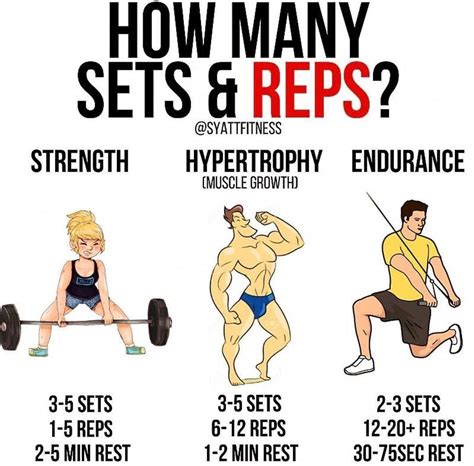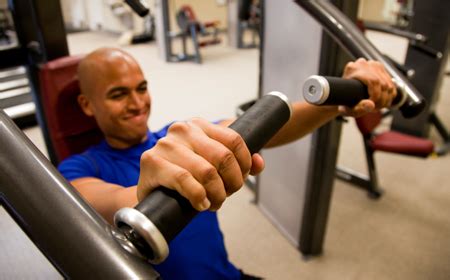what are positive reps ,Rep Quality: A Detailed Look At Effective Repetitions,what are positive reps,Everything you need to know about reps - from negative training to partial reps to time under tension. Learn how to focus and amplify your workouts. It's easy to focus on advanced training principles but it's just as easy to look past the basics. $358.00

When it comes to building muscle, strength, or endurance, one of the most common questions revolves around "reps"—specifically, what kind of repetitions should you perform to achieve optimal results? In the fitness community, people often debate the effectiveness of different rep ranges, the value of muscle pump, and the role of negative versus positive reps. Here, we’ll break down the importance of positive reps in strength training and muscle growth while providing a comprehensive guide to various types of reps and how to optimize your rep ranges for maximum benefits.
Rep Quality: A Detailed Look At Effective Repetitions
Reps, or repetitions, refer to the number of times you perform a specific exercise or movement in a given set. The quality of those reps is what truly determines the effectiveness of your workout. Positive reps are the portion of an exercise where the muscle shortens as you lift the weight (also known as the "concentric" phase). These reps play a significant role in building muscle strength and endurance.
When we think about reps, we often focus on how many to do, but it’s equally important to think about the form, speed, and intensity with which each rep is performed. A positive rep involves a controlled lift with adequate resistance, allowing the muscle to engage fully. The quality of each rep is critical to muscle stimulation and growth. This is why it’s crucial to avoid jerky, fast movements or using momentum, which can reduce the time under tension and lower the effectiveness of your workout.
The Science Behind Positive Reps
During positive reps, the muscle is contracting and shortening, which is when muscle fibers are activated most intensely. According to research on muscle hypertrophy (the increase in muscle size), time under tension (TUT) is key to stimulating muscle growth. By controlling the positive part of the rep and resisting the urge to rush, you allow more time for the muscle to engage and grow.
Strength training protocols often use positive reps in combination with negative reps (the lowering phase of the movement) to maximize muscle growth. But focusing on positive reps is essential in initiating the muscle contraction and overcoming resistance, which is why this phase is particularly important when you’re trying to build strength and muscle mass.
Rep It Out: The Truth About Rep Ranges And Muscle Growth
The age-old debate about whether high or low reps are better for muscle growth has existed in the fitness world for years. While there’s no definitive answer, understanding the role of different rep ranges can help you tailor your workout program to suit your goals.
Low Rep Strength Sets
Low-rep sets, typically in the range of 1-5 reps, are most commonly associated with strength training. The focus of low rep sets is on maximum force output, and the weights used are usually close to your one-rep max (1RM). These reps are fast, explosive, and require a lot of energy and power. While they are effective for building pure strength, they don’t necessarily maximize muscle hypertrophy (growth). For this reason, athletes often incorporate a mix of low reps (for strength) and higher reps (for muscle growth) to ensure balanced progress.
High Rep Sets
High rep sets, typically in the range of 12-20 reps, tend to emphasize muscular endurance and hypertrophy. These sets usually use lighter weights, but the increased number of reps creates a significant time under tension, which contributes to muscle growth. The extended period of tension encourages the muscles to develop more blood vessels and capillaries, improving nutrient delivery and waste removal. While high-rep sets are often associated with endurance training, research has shown that they can also promote muscle hypertrophy when performed correctly.
The Pump and Muscle Building
The "pump" that people often experience after high-rep sets (where muscles feel swollen and engorged with blood) is not just a temporary aesthetic; it’s a sign that the muscles are experiencing increased blood flow, oxygen, and nutrients. This increased blood flow may promote muscle protein synthesis, which contributes to muscle growth. While it’s not the sole factor in building muscle, it’s certainly an important part of the process.
The pump has been linked to an increase in anabolic signaling, which activates muscle-building pathways. It’s also thought to improve nutrient delivery to the muscle fibers, which aids recovery and muscle growth. But while high-rep sets have their benefits, they should be paired with other rep ranges for overall development.
How To Use Negative Reps for Positive Gains

what are positive reps $79.00
what are positive reps - Rep Quality: A Detailed Look At Effective Repetitions